The major drivers of future-proofed HVAC systems are efficiency, resiliency, electrification, and grid-interactivity. Efficiency has been around as long as HVAC systems have. A more recent trend has been pushing the industry more towards electrification, including heating and the move to heat pumps. While a major focus of the past was reliability, today the focus has evolved to include resiliency. The latest driver is grid interactivity. This article will touch on all of these points and the components that tie into them.
Future-Proofed HVAC Systems Characteristics
Click charts to enlarge
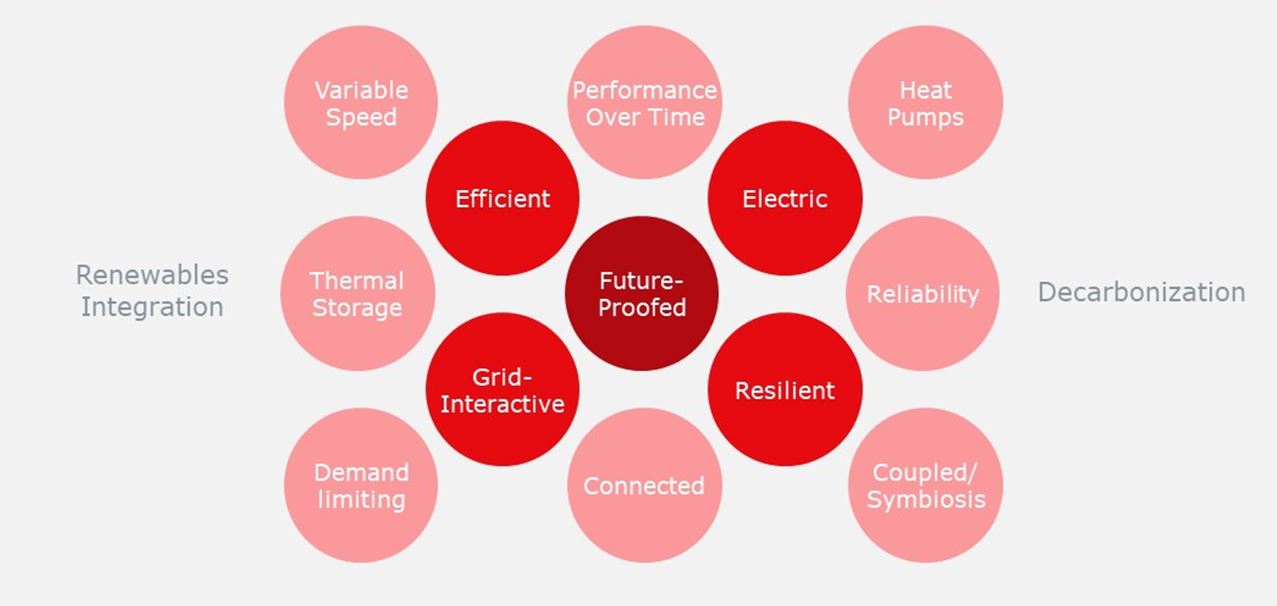
Efficiency
While variable-speed technology is not new, it is becoming more critical than ever. And with variable speed comes drives, the latter enabling the former to improve performance.
As HVAC systems become more connected, and more tracking of performance of equipment is done as a result of that connectivity, the realization of performance over time becomes much more critical, and maintaining that performance becomes much more critical. As mentioned before, electrification and specifically electrification of heating is becoming a major factor, and the major factor for HVAC systems related to that is the trend to heat pumps — both air-to-water heat pumps and water-to-water heat pumps.
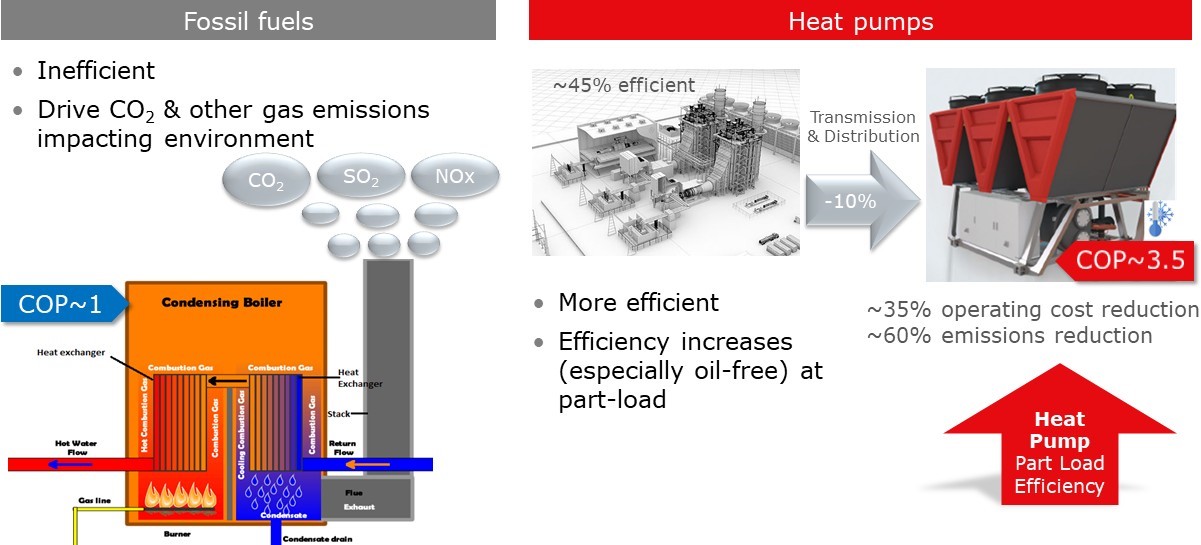
Resiliency
In the past, resiliency was mostly defined as reliability, especially for mission-critical systems. What has added to that factor more recently is the coupling of cooling and heating systems to renewable-based power generation and their corresponding inconsistent availability. More critical for HVAC systems is designing a system that can react to those periods of low or no renewable generation.
Grid Interactivity
Having a more resilient system that incorporates the systems of multiple buildings for a micro-thermal grid, it is very critical that all components and systems are connected and that you understand the real-time operating costs and the operation of each one of those components in the systems. Tied to that grid-interactive factor, as well, is demand limiting. In these grid-interactive, efficient buildings, the No. 1 factor that comes into play for HVAC systems is the ability to respond to the utility’s signal to demand-limit those components. That, in turn, ties to variable speed and the ability of a variable-speed HVAC system to respond exactly to that demand-limiting signal and closely match the thermal load at the same time.
Electrification
The most significant factor that we see changing with HVAC systems in the future is the change from fossil fuel source electric. More specifically, the move to renewables and heat pumps. This move is based on the fact that fossil fuel sourced heating is inefficient — with the COP of approximately 1 — and it also drives the emissions of CO2 and other gases which are harmful to the environment.

Even accounting for losses from generation to usage, electric systems are significantly more efficient. Based on modelling that Danfoss has done, changing from a fossil fuel-based to an electric system can reduce operating costs at least 35% and reduce corresponding emissions by 60%. What drives decarbonization is a reduction in energy consumption as well as the decarbonization of the energy consumed. To put it another way, using an energy-efficient electric system on a grid that uses renewable resources.
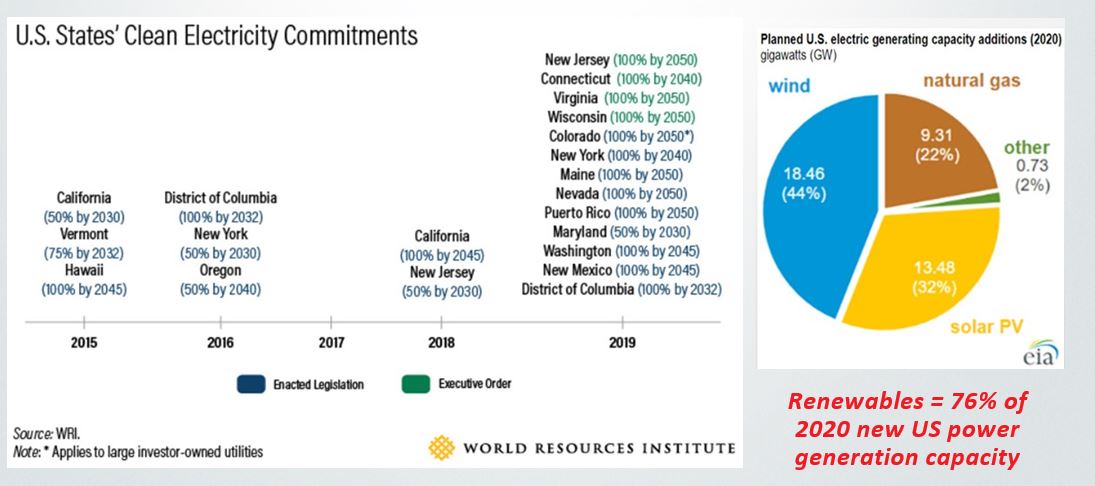
In the last few years, we have seen a significant change in the commitments of individual states to integrate renewables into their power grid. Just last year, we had a number of states commit to have around 100% of their energy come from renewable sources as early as 2030. That only matters if the reality of what is being implemented reflects the policy of what is being planned.
Emissions Reduction
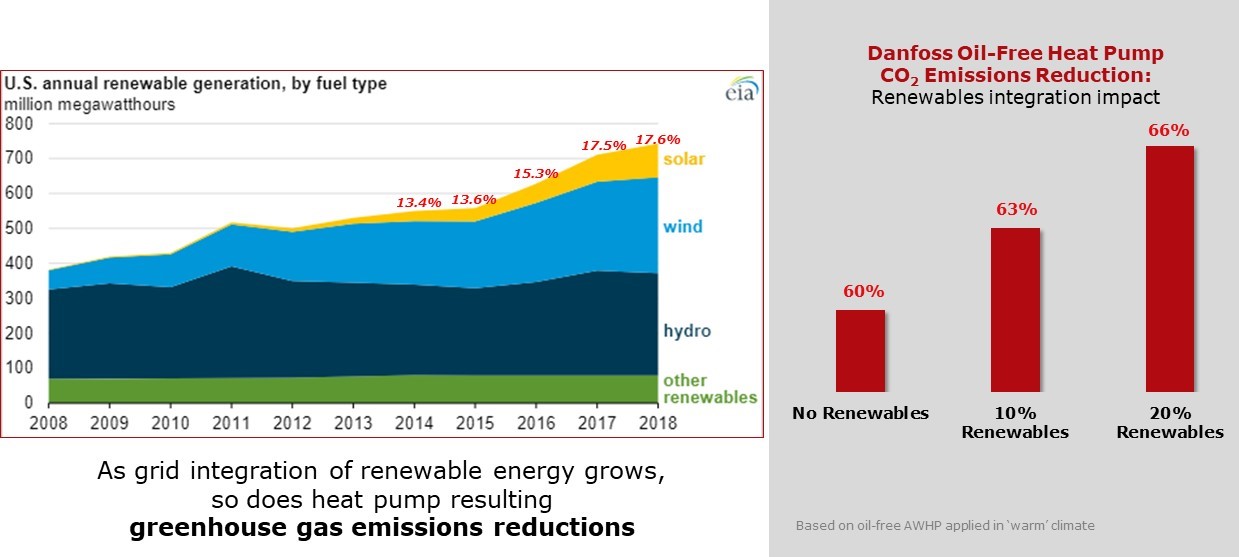
The Energy Information Agency (EIA) has reported that 76% of new U.S. power generation capacity is renewable. Additionally, November 2020, the IEA in reported that globally, renewables constituted 90% of the year’s newly installed power generation. To accomplish this plan, the need continues for some level of what are called peaking plants to address gaps with a renewable grid on the supply side.
Previously, we had peaks and valleys mainly driven by the demand side, but moving forward, we expect to see them also driven by the supply side. Which is where peaking plants as well as energy storage come in, to address those gaps, as well as on the demand side, which is addressed below.
Energy Costs & Utility programs

In the past several years, we have seen a significant growth in the use of renewable energy and integration in power grids. That, in turn, drives a significant reduction in CO2 emissions from implemented electrification equipment. As discussed previously, we have the potential for around 60% CO2 emissions reduction based on a near 100% fossil fuel source electric grid. As renewables are integrated into a grid, the resulting CO2 emissions reduction from the implementation of heat pumps, as opposed to fossil fuel-based boilers, also goes up.
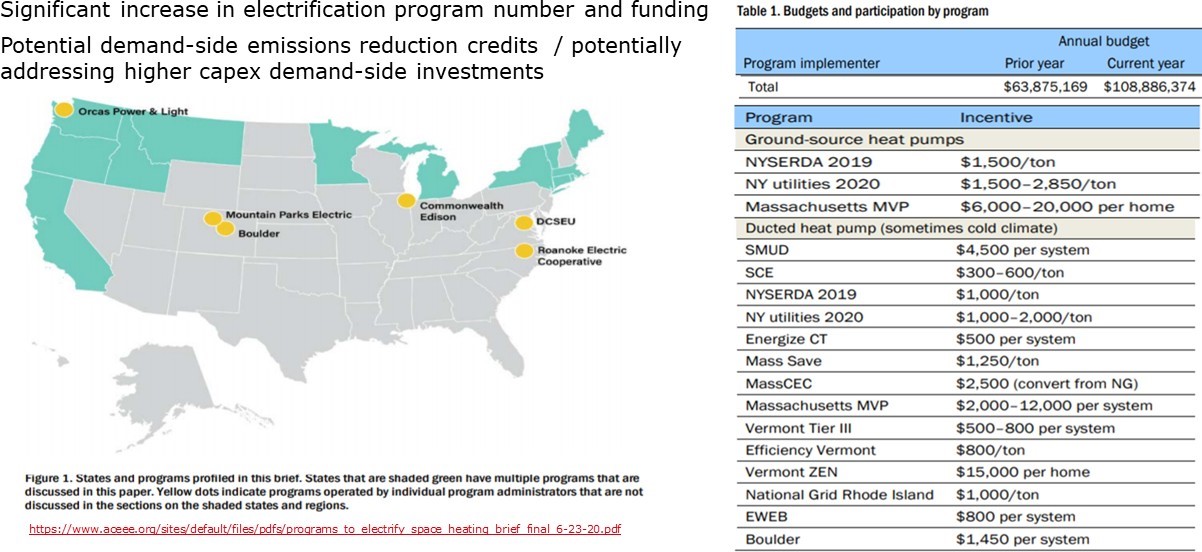
Utilities are driving the demand side of electrification programs. Specifically, they are creating electrification programs that include advanced heat pumps and grid-interactive efficient buildings.
These demand-side changes can allow utilities to put off the more capital-intensive changes of additional switching from fossil fuels to renewables. Electrification programs also drive the efficiency option, as efficiency is always the lowest cost option. To put it another way, not using energy in one location is always the lowest cost source for another.
Reconnecting Supply & Demand

As the renewable volume goes up on electricity grids, the cost comes down. And that can be seen with wind and solar, which have significantly come down in cost and will continue to go down. In the meantime, energy efficiency is by far the lowest cost generation source. We have also seen a significant change in the number and the content of electrification programs. The American Council for an Energy-Efficient Economy (ACEEE) is a great resource for what electrification programs are available, both locally and across the nation. Today, a lot of these programs are centered especially around the Northwest and Northeast, but they are expanding to other localities.

Another factor that comes into play is reconnecting supply to demand. In addition to peaking plants, we will need to address the additional disconnect created from supply and demand by integrating energy storage on the supply and demand side.
Grid Interactive Efficient Buildings (GEB)
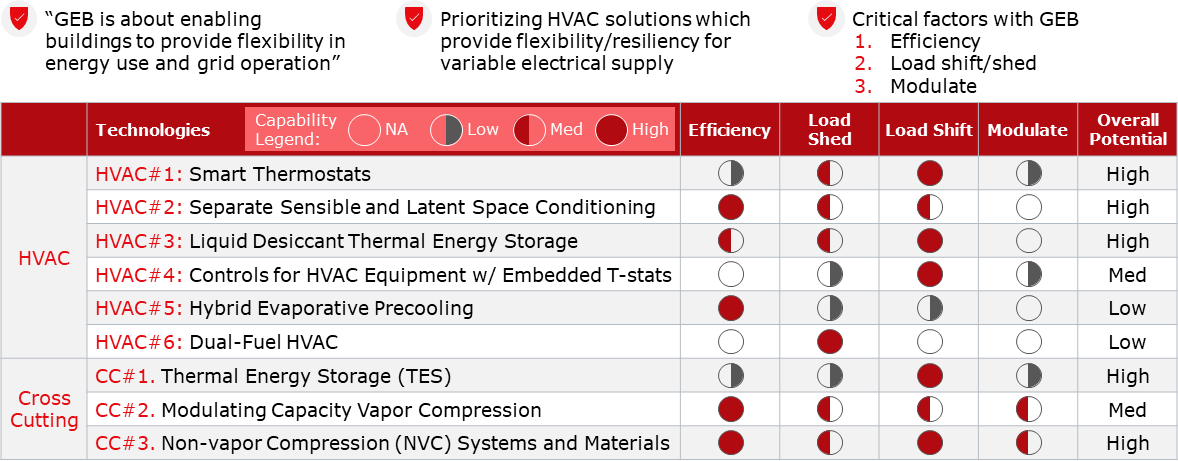
Energy storage takes various forms, including batteries, pumped hydro, and thermal storage. The most cost-effective form of energy storage today is thermal storage. While the energy storage cost of batteries will continue to come down, thermal storages is still in the range of about 1% to 10% of the applied cost of battery storage, and we expect that difference will continue for a while.
Missing from the conversations thus far on grid-interactive efficient buildings and future-proof HVAC systems has been the potential of district energy systems to address all these goals. District energy systems have built-in redundancy, storage, and resiliency. A district energy system takes advantage of the built-in thermal flywheel effect, creates the option for recovering heat from different sources in the system, and turns down generation sources that are built into the system as needed based on demand.
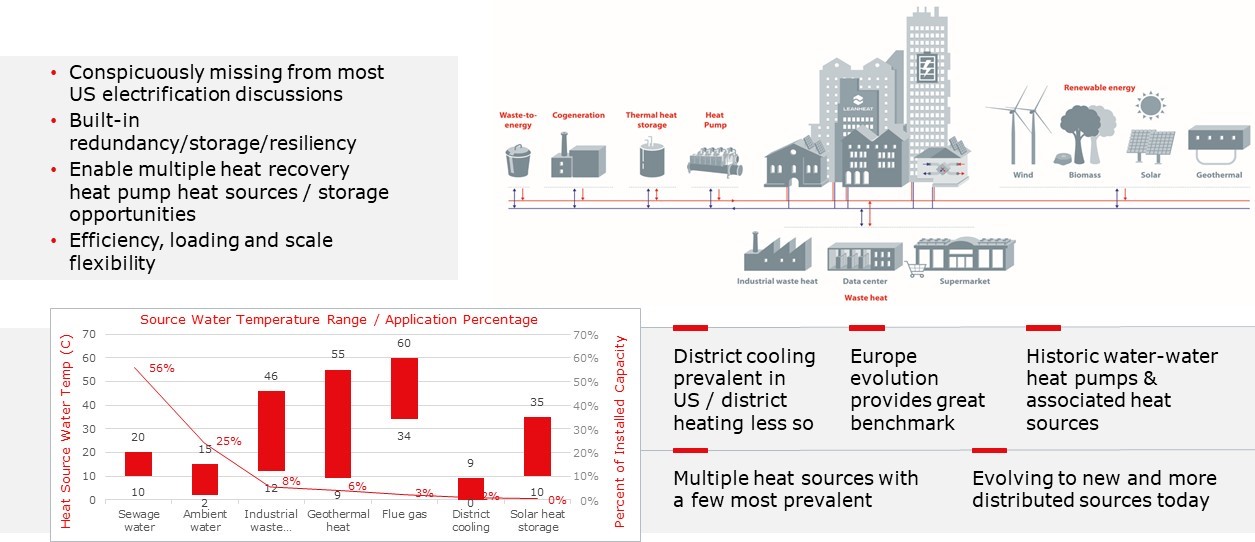
We have seen significant evolution of district energy — especially district heating — systems, particularly in integrating in and planning out heat recovery and electrification of those systems. Adding heat pumps, and specifically water-to-water heat pumps using heat recovery, is a fantastic solution for both electrification and the ultimate goal of decarbonization. Examining the different district energy solutions available today, we see that smaller-capacity heat recovery sources are becoming much more prevalent as opposed to more of the centralized utility-driven generation. With the move from macro thermal grids to micro thermal grid with these district energy systems, the energy source is moving to the outer reaches of newer systems.


Report Abusive Comment